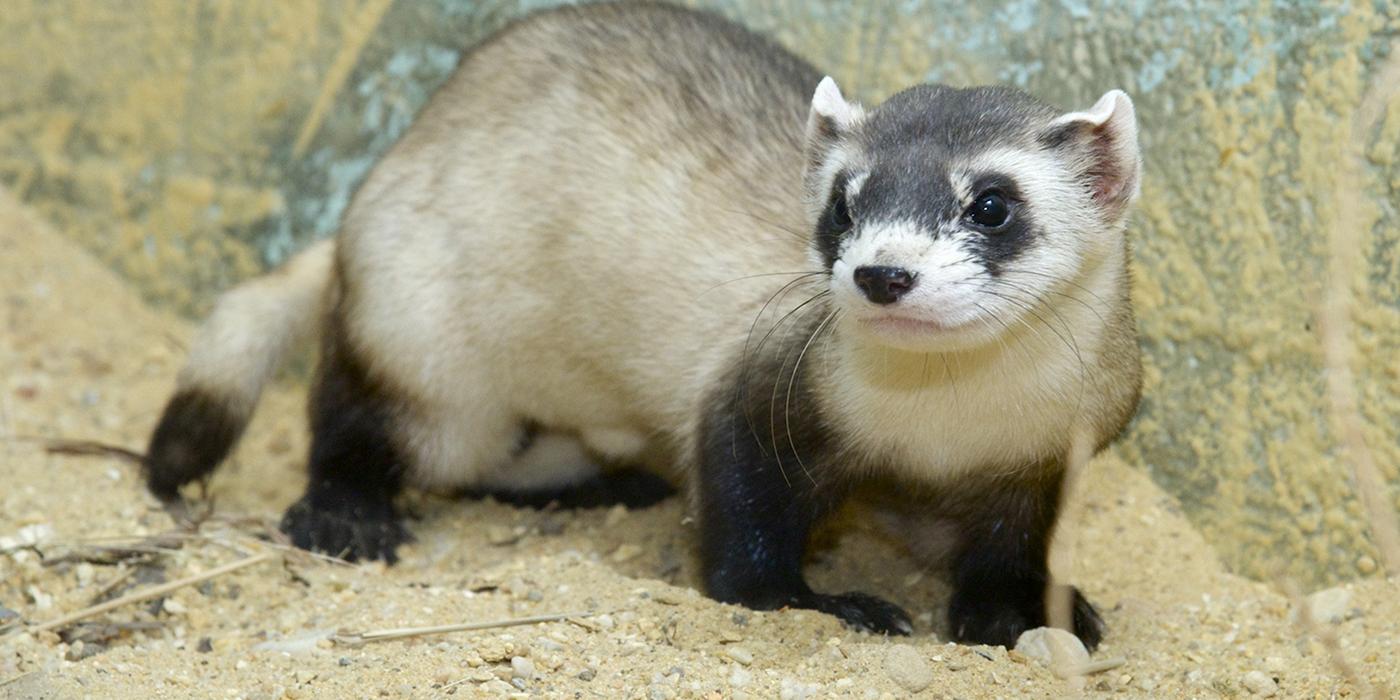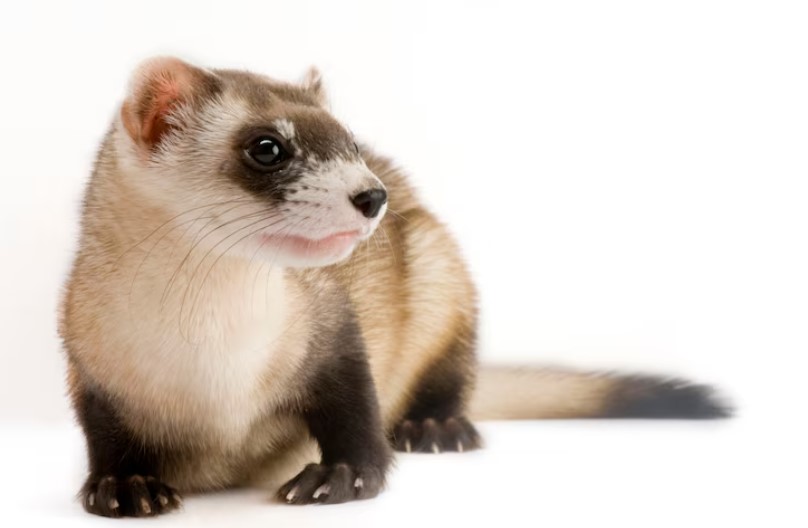





The black-footed ferret(Mustela nigripes) was once in the North American Great Plains but now occupies some parts of their former range in Wyoming, South Dakota, Montana, and Arizona. They are the only ferret species that is native to North America. They mostly live in the prairies and grasslands of North America along with prairie dogs, their main food source, and American bison, which made a comeback after going to near extinction.
Black-footed ferrets have a black face mask that makes them look like bandits. It also has black paws, which is how it got its name. It also has black on its legs and the tip of its tail. The rest of their body is short and sleek, with yellow-buff fur, lighter on the belly and nearly white on the forehead, muzzle, and throat. The forehead is arched and broad, and the muzzle is short. It has few whiskers, and its ears are triangular, short, erect, and broad at the base. The toes are armed with sharp, very slightly arched claws. The feet on both surfaces are covered in hair, even to the soles, thus concealing the claws. Their large ears and eyes suggest that they have acute hearing and sight, but smell is probably their most important sense for hunting prey underground in the dark. They are about the size of a mink—18 to 24 inches long, including a 5 to 6 inch long tail. They weigh 1.5 to 2.5 pounds with males being slightly larger than females.
This animal is solitary and only comes together when mating or when a female is raising a litter of kits. Female black-footed ferrets have smaller home ranges than males. Home ranges of males may sometimes include the home ranges of several females. Adult females usually occupy the same territory every year. It is primarily nocturnal. They spend most of their time underground in prairie dog burrows, typically spending only a few minutes above ground each day during the first few hours following sunrise to hunt or find new burrows or mates. Ferrets do not hibernate, but in winter, the amount of time they are active and the distances they travel decrease substantially. They have been found to remain underground in the same burrow system for a week at a time in winter. Breeding generally occurs in March and April. Their gestation period lasts 41-43 days. After that, they give birth to a litter of kits. The average size is 3-4 kits but some have been recorded to have litters of 9-10. They are mostly born helpless and blind, with white hair on their bodies. Their eyes open within 35 days after birth and their dark markings appear at 3 weeks. They develop rapidly and are very active once their eyes are open. Kits are about three-quarters grown by July when they first venture above ground. Long after they stop nursing, they depend on their mother for meals of meat. By late summer, the female leaves her kits in separate burrows during the day and gathers them together at night to hunt. Eventually, the young begin to hunt alone, and by September are usually independent and solitary. Ferrets become sexually mature at 1 year of age.
90% of a black-footed ferret’s diet is mostly made up of prairie dogs. The other 10% consists of small mammals and rabbits. Their diet varies based on their geographic location. Ferrets in western Colorado, Utah, Wyoming, and Montana, black-footed ferrets eat white-tailed prairie dogs and find alternative prey when white-tailed prairie dogs enter their four-month hibernation cycle. Alternative prey included mice and voles. In South Dakota, they eat black-tailed prairie dogs, which don’t hibernate at all.
Black-footed ferrets used to live along the Great Plains, but due to farmers killing prairie dogs because of fear of no food for their livestock, the ferrets lost a source of food and began to starve to death. They went extinct in the wild as a result. In 1987, 18 animals were captured in the wild to begin a captive breeding program, which has since reintroduced ferrets into promising western habitats. The ferrets were bred in captivity and then reintroduced into the wild. They are now listed as Endangered, with only some animals inside pockets of their former range in Wyoming, South Dakota, Montana, and Arizona.
The only tip I would recommend for helping this animal is to visit zoos accredited by the Association of Zoos and Aquariums(AZA). These zoos participate in breeding programs and the money that you spend will also fund wildlife conservation.